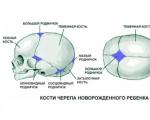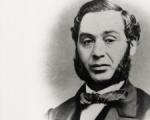Print out copybooks for correcting a teenager's handwriting. Copybooks of past centuries... Is the Tsarevich’s handwriting beautiful?
How to correct a child's handwriting?
There were times when the subject “penmanship” was included in the school curriculum. Today, beautiful, clear handwriting now matters. This is especially important for schoolchildren, who often even have their grades reduced for poor handwriting. What to do in this case? Correct bad handwriting! This is a very real task, the main thing is to practice regularly, and the result will not be long in coming.
The development of handwriting in children is very difficult, since most of them have practically no developed fine motor skills at the beginning of their education. Children come to school without knowing how to carefully color a picture without going beyond the outline; cannot cut a figure out of paper, etc. These problems arise for several reasons:
Excessive care of the child by adults (they will dress him and put on shoes, and put away his things for him, and allow him everything).
- Uncontrolled passion for various gadgets (the child is busy - the parents are happy).
- The reluctance of many parents to work with their child, to develop him (they will teach him at school), and much more...
If calligraphy still causes difficulties and creates many problems in your studies, then you can try to correct the accuracy of your writing. Handwriting notebooks can help you with this. They draw oblique lines and show examples of writing letters; it is also possible to trace letters along dotted contours.

Drawing, modeling, playing string and keyboard instruments will help in correcting handwriting in children.
Develop a step-by-step concept for improving handwriting and follow it regularly. For example, spend fifteen minutes every day on copywriting, fifteen on drawing (try to trace some drawings along the contour), and ten minutes on exercises to develop fine motor skills of the fingers.
Exercises to improve handwriting
Do the exercises before and after writing.
Exercise 1
The child places his palms on the table, raises and lowers each finger over the table in turn, moving from one hand to the other. Then he alternately raises identical fingers on both hands.
Exercise 2
Place a few pencils or pens on the table. Let the child try to collect all the pencils into a fist, using one hand, and then the other. When all the pencils have been collected, they need to be returned to the table, again with only one hand.
Exercise 3
The baby should hold the pencil between the index and middle fingers. Let him try to draw some figures without bending his palm and fixing the position of the pencil.
Exercise 4
Take a tennis ball (or another similar size) and have your child place it in their palms and straighten them. The ball needs to be rolled back and forth, in a circle, without bending your palm.
Exercise 5
Clenching and unclenching the fists and rotating the hand.
Note: the total class time is 30-40 minutes, and continuous writing should not exceed 10-15 minutes. With longer lessons, the child will get tired, and there will be no use from such a lesson.
Helpful advice:
To successfully master writing skills, activities that develop fine motor skills are very useful. Collect puzzles and mosaics with your child. Fold origami. String the beads. Embroider.
Make the tasks more difficult gradually. Only if the previous one is completed successfully, you can move on to more complex tasks.
If something doesn’t work out, don’t rewrite the same thing several times - do a similar task. If the text was rewritten, just continue writing, trying not to make mistakes.
Poor handwriting in a child is a fairly common occurrence. Learning to write is quite a difficult task for a child. And it will be too late to correct handwriting in grades 3-4, since due to the high pace of writing, there is no need to talk about the beauty of notes and training of elements. In order to correct some of the problems associated with unsightly handwriting, you need to follow the following rules.
1. Set aside 30-40 minutes for studying every day to correct your handwriting. These classes should take place at a time separate from the preparation of lessons (classes once or twice a week will not give any results).
2. Select special exercises for classes or purchase a ready-made notebook with exercises in the store, but do not force your child to write according to the principle “the more the better and no matter what.”
3. The tasks should be fun and interesting for the child, developing motor and visual coordination. When the work in copybooks and notebooks with oblique rulers is completed, it is best to buy the most beautiful notebook and start working in it: writing poetry, sayings of famous people, passages of prose. It is also recommended to simply write more with a pen, for example, keep a diary, paint, sculpt, draw, do finger exercises. After systematic practice, you will be able to change your handwriting for the better.
Basic rules of beautiful writing
First of all, you should understand the reasons for poor handwriting. But we must not forget about simple but significant points that are often not observed by the guys. If you do everything correctly, your handwriting will noticeably improve.
- The tilt of the writing is affected by the position of the notebook. You need to place it so that the lower part forms an angle of approximately 30-40 degrees with the edge of the table. You can check the correct position of the notebook when working with copybooks that have oblique lines, which should be perpendicular to the edge of the table.
- Correct grip and comfortable handle. Correct grip must be taught already at the time when the baby first takes pencils and felt-tip pens for drawing. To hold a writing object correctly, you need to place it on the lower side of your middle finger, and use your index and thumb to fix this position by simply lowering them onto the handle. The grip should not be strong, otherwise the hand will constantly get tired, the writing will be slow, and the letter and words will be uneven. The writing object should be comfortable, the optimal width is 7-10 mm.
- Correct landing. You need to sit deeply in a chair, move towards the table so much that there is a palm-width of space in front. Legs are bent at an angle of 90%, back is straight, shoulders are at the same height. The body can be slightly tilted forward, with the elbows resting on the edge of the table and the head not lowered. If the child leans completely against the back of the chair, then his elbows should slightly extend beyond the edge of the table and be at a distance of 10-15 cm from the body. This position is considered ideal.
- Regular training. Having observed the three previous conditions, you can begin writing. The more practical lessons you have, the more confident and beautiful your handwriting will become.
To help improve your handwriting, you can purchase exercise machines
.

Forming a letter is a complex process. It involves painstaking, hard work. In addition, it is important to keep your handwriting individual, but make it as legible as possible. Not everyone is able to remember how this important skill was developed. Gradually, adults notice that their handwriting has deteriorated greatly. If this fact is obvious, you need to download copybooks to correct an adult’s handwriting, because the consequences of such a conclusion can be very sad:
- A person cannot capture even a short text.
- Poor handwriting often makes a conclusion about the author's organizational and executive abilities.
- At the slightest emotional stress, handwriting deteriorates, and you have to not only improve it, but also normalize your mental state.
It is also impossible to remember when your handwriting became bad. Many people believe that this happens during training, when you need to write a lot and quickly. The opposite circumstance is no less mysterious - that is, it is impossible to understand when a person began to write legibly and beautifully.
The importance of clear handwriting cannot be understated. It is impossible to take seriously a text consisting of incomprehensible signs and squiggles. The manner in which characters are written is related to a number of factors. It is difficult to determine the reasons why it gets worse or better. Scientists are trying to identify the role of hereditary genes, perseverance in class, and the conscientiousness of the teacher. These are only a number of conditions; it is very difficult to identify all of them.
It is much more accurate to identify what each person’s handwriting says. If you want to change your destiny, try to change it. In order for adults to create understandable texts, we have developed special copybooks for adults to improve handwriting, solving this difficult problem. They are purchased by those who decided to correct the spelling of letters and numbers, to improve their writing, making it simpler and more understandable.
Excellent teaching material, written in a special font, created for those who have set themselves the goal of achieving quick, beautiful adult handwriting. In teaching children this knowledge, the traditional school has long adhered to two basic fundamental principles. Effective learning, according to the first of them, is not an end in itself. It is much more important to structure the educational process, to explain to students why they are obliged to circle the signs, instead of achieving an end in itself.
Writing quickly but beautifully is difficult, and this is most likely within the capabilities of an adult. To control your actions, you need to have a certain responsibility. And, of course, it is very important not to give up and strive to achieve the goal by practicing regularly and persistently.
Print out copybooks to correct adult handwriting
Copybooks- special albums and manuals for training the correct writing of letters and preparing a preschooler’s hand for writing. If earlier we, parents, only knew copybooks at school (these were notebooks in which first-graders learned to write letters accurately), now you can find special copybooks for toddlers and preschoolers. Copybooks for children: figures, numbers, letters teach kids to write beautifully and train their hand.
There are recipes that are intended for a certain age of the child. On store shelves you can find recipes for children 3-4 or 5-6 years old.
In this article, I have prepared for you sets of copybooks that you can download for free and print out yourself. You can save the necessary pictures and give your child a new copy sheet every day.
Recipes for kids
Do you think that copybooks are only for preparing for school? This is not entirely true. Young children can trace simple pictures or large letters along the outline or dotted lines. These are recipes for kids. There is almost no text in such copybooks, because the child cannot read yet. But they are very large, and the pictures are funny. Why not invite your child to trace the dots around the cheerful cockerel or color the duckling.


Children 4-5 years old can be invited to play with - these are also a kind of copybook. In such copybooks you will not find numbers or letters; they are still difficult for a child. But tasks on logic or precision of movements will be required. By tracing figures, drawing curved and straight lines, the child masters a pen or pencil, learns to press and draw without taking his eyes off the paper.
Among the copybooks for children, a special group of copybooks can be distinguished - these are shading. They are drawings that need to be filled in with straight or dotted lines, depending on the task.

Recipes for children 5-6 years old
For children 5-6 years old, the copybooks will have more complex tasks. They include printed and written letters, as well as sticks, hooks and other parts from which written letters are constructed. But the dotted lines in these copybooks remain. The child traces the letters using them, learns to draw a line evenly and without interruption. It is better to trace the letters in the copybooks with a good pen, because when working with a pencil, the child may press the pencil too hard, and this will tire the hand.
.jpg)
.jpg)
Using such copybooks, the child will not only become familiar with the letters of the Russian alphabet, but will also begin to remember them better, and will also learn how to write them in writing. Numbers are also often found in copybooks for preschoolers. A preschooler gets acquainted with numbers and counting.
Recipes for children 5-6 years old can be divided into:
- copybook ALPHABET,
- copybook NUMBERS.

Copybooks for schoolchildren
In order for a child to learn to write beautifully, and for his handwriting to be preserved and not spoiled, you need to practice a lot. At school, teachers do not attach much importance to correct hand positioning when writing and handwriting. But parents can try to work with their child themselves using special recipes for schoolchildren.
.jpg)
.jpg)
Calligraphy writing is a good skill that every child can develop. Download and print the copybooks and practice with your student in writing beautiful letters. IN
Please note that there are no pictures or shading in these copybooks. Basically, these copybooks are aimed at training good, beautiful handwriting.
During classes, pay attention to how the student holds the pen and how he draws lines. Make sure your child writes the letters without taking them off the paper. Don't scold your child if he can't write beautiful letters right away. Make sure that the child starts writing the letter from the right point, and not the way he likes. For example, they begin to write the capital letter P from bottom to top. Keep an eye on this. Now many copybooks even have arrows and dots - guidelines for children. Show them these arrows and explain what they are for.
I hope the copybooks will help your child learn to write beautifully and correctly!
Eugene
A team of teachers - activists of the public organization "Parental All-Russian Resistance" (RVS) - at the request of parents who were dissatisfied with the existing teaching methods in primary schools, adapted to modern realities and republished in 2016 the textbook "Arithmetic" for grade 1 by A.S. Pchelko and G.B. Pole.
Why Pchelko's textbook? Read the review that we, the Vladimir branch of the RVS, received from a highly qualified primary school teacher - Larisa Nikolaevna Raikova, and which we are publishing today with her kind permission, and you will immediately understand why. + Textbook “Arithmetic” for grades 1 to 2- x parts / - “New edition” / RVS, 2016 In front of me lies the textbook “Arithmetic” for grade 1 by A.S. Pchelko and G.B. Pole. I flip through the pages and feel: there is a breath of something familiar, kind and very familiar. I catch myself thinking that this is the smell of childhood, and vivid pictures of the wonderful school life of a Soviet first-grader emerge in my memory. I don’t remember which mathematics textbooks we used in 1st grade in 1976, but for some reason the pictures from “Arithmetic” create the feeling that I saw this a long time ago...+ As a teacher with 29 years of teaching experience in primary school I can say that the textbook “Arithmetic” by A.S. Pchelko (hereinafter referred to as the TEXTBOOK) is maintained in the best traditions of the Soviet classical school and is aimed at ensuring that children develop a strong arithmetic base, which would further contribute to the development of a successful mathematical education of the child. The secret of the textbook is not in its simplicity, but in its accessibility and gradual presentation of the material. Some will say that for modern children this textbook is primitive. I can object to this: who said that our children require the difficulties into which we plunge them from the first days of school life, uttering abstruse words and introducing the child into an incomprehensible world of abstract terminology for him? For some reason, we, adults, decided for children that the more new things a child learns in a lesson, the smarter he will become? Is this so?...+ It’s no secret that sometimes, in order to achieve high results, elementary means and techniques are required, and not something “extraordinary and archetype”. This TEXTBOOK can help children achieve significant success in studying mathematical sciences, because teaching in it is based on the children’s existing experience and in accordance with the mental and physiological development of children. It is also very literate that the authors skillfully use the visual-figurative thinking of first-graders and focus not only on the clarity of the textbook, but also on the objects and phenomena that surround the child in everyday life. And tasks like: “Show as many sticks as there are bags drawn,” “Place as many circles as there are cucumbers drawn,” “Draw as many as…”, “Make such a figure from sticks…” not only diversify the lesson, but make it active and activity, increase the motivational aspect of learning, reduce the threshold of fatigue in younger schoolchildren. + The TEXTBOOK is quite rich in tasks, which from lesson to lesson become more complex from simple to complex, which makes it possible to put into practice the principle of accessibility “from simple to complex.” All task texts are based on the child’s life experience and contain great potential for the implementation of the educational side in lesson activities, for example: “Brother helped his sister make counting sticks...” - mutual assistance, helping a friend, cooperation, friendship, etc., or “There were 4 birch trees growing in the clearing, and the same number were planted in the fall...” - ecology, hard work, landscaping, respect for nature, etc. Students gradually learn to solve problems, reason, prove the correctness of the solution, create inverse problems, abstract and express themselves when using mathematical terms. The TEXTBOOK is really a good tool and in the hands of an experienced teacher it can make a serious breakthrough in the formation of the mathematical education of younger schoolchildren and become a worthy competitor for other mathematics textbooks, but... there is one point that may worry some: how will the geometric base of younger schoolchildren be formed? After all, all kinds of control, independent and testing work also include geometric material? For myself, I would certainly find the answer, because the geometric component of mathematical education can be formed not only in class, but also in extracurricular activities, which is an integral part of the implementation of the Federal State Educational Standard of NEO, therefore I would be happy to offer children the elective “Visual Geometry” by T.V. Zhiltsova and A.A. Obukhova.+ In conclusion, I want to say:+ “Dear ARITHMETICS! Welcome to the modern school!” L.N. Raikova, teacher of the highest qualification category, Municipal Budgetary Educational Institution “Secondary School No. 1 named after. Hero of the Soviet Union Kamanin N.P.” Melenki, Vladimir region + Listen also to what those who worked on the revival of “Arithmetic” said about this textbook, with the goal of reviving classical education in our country, at a presentation seminar held on October 20, 2016 in Dubna. The video can be viewed at this link.
And read the speech of one of the project participants based on this one.+ Of course, RVS enthusiasts who dream of returning classical domestic education to Russian schools are not going to stop at one textbook. Now intense work is underway to prepare for the publication of the entire range of textbooks for primary schools. The results will be available on the RVS website. As V.V. said Mayakovsky, “the work of hell will be done and is already being done.” If you are passionate about the education of our children, join us. The work is carried out on a voluntary basis. + Galina Solovyova, RVS
On our website you can download and print copybooks for children aged 4 years and above. There are many copybooks for preschoolers and schoolchildren with developmental tasks, and copybooks for correcting handwriting, which will be useful even for older schoolchildren.



